So...what do we have here?
Tengai Makyou: Daishi no Mokushiroku [Strategy RPG Game]

Japanese Game Case Front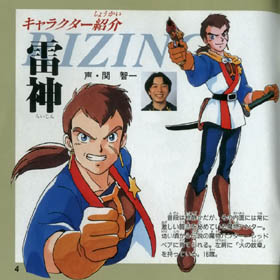
- Rizing (16 Years Old) -Although Rizing Is Young,He Is A Very Talented Hunter! This Is All Thanks To His Master, Red Bear.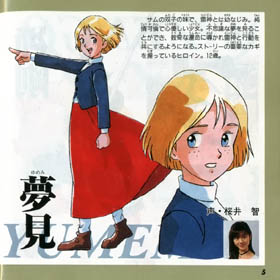
- Yumemi (12 Years Old) - You Can't Use Yumemi For A Little While, But She Is Very Gifted And A Dear Childhood Friend Of Rizing.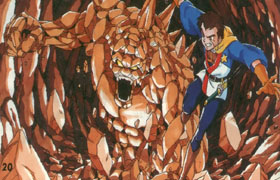
Rizing Sure Does Seem To Have His Work Cut Out For Him! |
|
Ah...Tengai Makyou. To most Westerners, this may not sound like anything, but to the gamer folks in Japan, the name sticks out like a sore thumb. Tengai Makyou is one of the most popular RPG series of all time in Japan, and it easily held its own against the mightest of RPG titans like the Dragon Quest and Final Fantasy series back in the 16-bit era. The games had great soundtracks, good graphics, and one hell of a sense of humour. This is all well and good, but if it's so great, why didn't the U.S. ever have the pleasure of seeing this great series? Well, it would be MUCH easier and shorter to just to tell you about this game, instead of telling you why it wasn't released in America or otherwise. Tengai Makyou: Daishi no Mokushiroku tells the tale of a hero by the name of Rizing. His story comes into play when he is a mere ten year old boy (back in 1893) playing hide-n-seek with his friends and peers in a parody of the real life New Orleans. After the children have some innocent fun, Dave, the huskiest member of the little rascals, shows a photo of a seemingly creepy apparition that he catches partially with his camera when playing at an old abandoned mansion in town. Intrigued, the kids gossip about the guy. He could be a ghost...or he could just be albino...no one can say for sure, so what better way than to go FIND OUT for themselves, right? Well, as fate would have it, strange things ARE happening in New Orleans, as your ragtag crew witnesses Red Bear (Rizing's Father-figure of sorts and Mamano/Demon hunter mentor) slaying a group of demons. Despite that something obviously isn't right with that picture, the group continues onward into the manor. One thing leads to another, and they find the "man" in the photo...except he has a stake gouged into his chest...and he turns and looks at you!! What happens next is pretty predictable...they drop everything and run (which is what I'd do if I was unarmed and faced with an otherworldly entity)! Unfortunately, Dave was carrying a lit candelabra, so it burned the carpet in the room they were in and ultimately set the manor on fire. Red Bear discovers what you've down and knows that bad times are approaching, so he takes your friends to shelter, and decides to take Rizing out to fight some real demons. This is all good until you realize that one of your friends is possessed by pure evil and chants a mysterious spell that makes everything go white...and not much else is known between then and six years later when Rizing becomes a young man and a skilled demon slayer. Well...do you think this game is crazy yet? If not, don't worry...that was ONLY the beginning. With that said, the game gets WAY more ludicrous in nature as far as the storytelling goes. From effeminate merchants to a gay samurai to a female Indian warrior who isn't afraid to show off her rack to Rizing to a two dimensional freak who is actually three dimensional to a giant robot geisha and MUCH, MUCH more! This game is easily more bizarre than Earthbound in my book (not to mention more bizarre than any other game in the TM series and I mean no harm by my comments), and that's part of what makes it so great. The game is loaded with whimsical dialogue and parodies, kooky moments, great visuals (night and day effects too), and a presentable soundtrack, but it's also on a system like the Sega Saturn, which needed a few more great RPGs in my opinion. As such, TM:DnM delivers. The game also uses the "PLGS" (Personal Life Game System) that causes certain events to happen depending on the Sega Saturn's internal date and clock settings. Many of these events take place in Las Vegas and you can do a ton of things...buy presents for girls, play several mini-games, and even see the "WTC" (which sorta acts like our World Trade Center). About the only real problem this game has (if you would call it one) is its progression...the same problem as a lot of the games in the TM series. The game takes quite a while before it gets really good and battles are pretty slow-paced and not all too interesting. Battles are played out in a classic Dragon Quest style, where you can't normally see your crew during battles and enemies are huge and detailed, usually taking up a fair portion of the screen. The animation of the detailed foes is pretty unusual and the game's case calls it a form of "hybrid animation". It's kinda like every attack is a quick anime cutscene, and the enemies attacks come flying RIGHT AT YOU. The only thing that could make it better is if the game had the option of using 3D glasses. You don't learn too many abilities (though the game has a couple of cool cinematic team-up attacks) and the combat is pretty lame and hasn't evolved much as a whole. While it is good that this game implemented a system where enemies can be seen and often avoided on the map and in dungeons, it's not good that the game isn't particularly easy. You will have to grind occasionally...so you should get used to fighting. The gameplay hasn't changed too much from previous TM games, and while this is good...it could be better. Still, the game makes up for this with its outrageous comedic value and overall playability. You don't even need to know Japanese to get a lot of the jokes because they are so obvious...but you will need to know a lot of Japanese to get through this game (or a good FAQ). All in all, Tengai Makyou: Daishi no Mokushiroku is as imaginative as it is brilliant, and while you probably won't be amazed by the boring battles other than the giant animating enemies who strike at you...this game is one of the reasons I keep my Sega Saturn these days. Of course, if you don't want to get a Saturn, this game has been ported to the PSP, which I guess just goes to show you how noteworthy it is. - Written by Bel Cain The Eternal - |
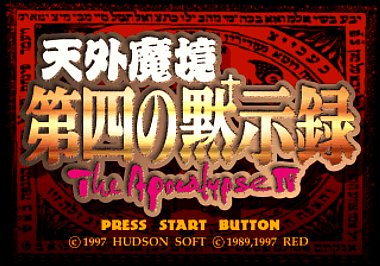
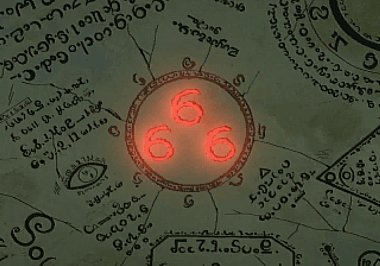
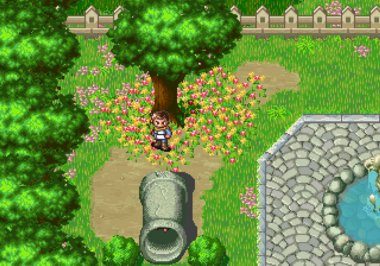

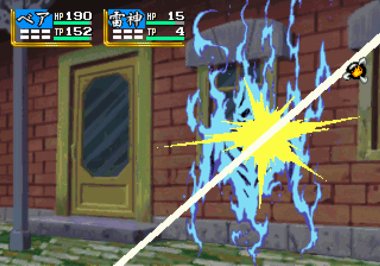
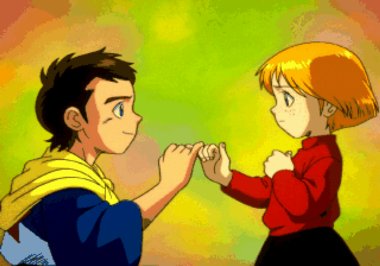
This review has 34 extra images.
Back to Sega Saturn Reviews Page
Back to the Video Game Reviews Page
Back to the Sanctuary Entrance
For more cool stuff, check out the General Gaming Interest and Video Game Scans sections. Price ranges based on eBay, Play-Asia, Japan Game Stock, and other factors. Prices are for complete copies.| All content shown in Gaming Sanctuary belong to their respective owners. |
|---|